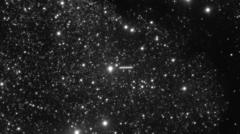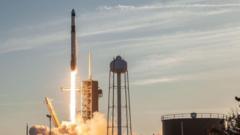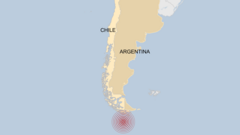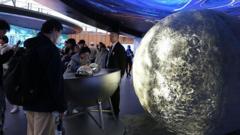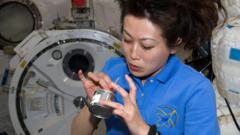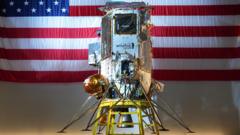With its powerful capabilities, the Vera C. Rubin Telescope has released its first captivating images of the Trifid and Lagoon nebulae. Expected to uncover new celestial phenomena and investigate dark matter, this observatory marks a significant leap forward in astronomical technology and research.
First Light: Vera C. Rubin Telescope Reveals Stunning Celestial Imagery
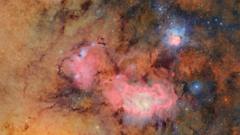
First Light: Vera C. Rubin Telescope Reveals Stunning Celestial Imagery
The groundbreaking Vera C. Rubin Observatory in Chile has unveiled its inaugural images, showcasing the depth of the universe and enhancing our cosmic understanding.
A groundbreaking new telescope in Chile, the Vera C. Rubin Observatory, has unveiled its first images, showcasing its unparalleled ability to explore the distant corners of the universe. In a stunning photograph, vibrant clouds of gas and dust can be seen swirling in a star-forming region located 9,000 light years away from Earth. This facility, equipped with the world’s most powerful digital camera, is set to revolutionize our comprehension of the cosmos.
The observatory is poised to potentially discover a ninth planet in our solar system within its inaugural year and will track dangerous asteroids that may come close to Earth. It aims to map the Milky Way, addressing pivotal questions surrounding dark matter, the elusive substance comprising a significant portion of the universe.
Astronomer Royal for Scotland, Professor Catherine Heymans, emphasized the importance of this milestone, stating, “I personally have been working towards this point for about 25 years.” The UK is a critical partner in processing the intricate data generated by the observatory as it scans the night sky continuously over the next decade.
The Vera Rubin Observatory can expect to increase the number of known celestial bodies in our solar system by as much as tenfold, as indicated by early reports. According to BBC journalists, the telescope is situated on Cerro Pachón, a summit in the Chilean Andes, providing an ideal environment for astronomical observation due to its high, dry, and dark conditions.
To maintain optimal observational conditions, the observatory employs strict measures against light pollution, ensuring the darkness surrounding the telescope is preserved. This commitment extends to engineering efforts aimed at preventing stray light from interfering with the astronomical data being collected.
The observatory's unique three-mirror design facilitates high-quality image capture, where the main mirror measures 8.4m in diameter. The telescope's camera is remarkable, comprising 3,200 megapixels, and is capable of producing images every 40 seconds for about 8-12 hours each night for a vast Legacy Survey of Space and Time. This results in roughly 10 million alerts to scientists every night, enabling observations of transient celestial phenomena.
One notable aspect of the telescope's design is its capabilities to detect faint galaxies and other distant objects, allowing scientists to glimpse billions of years back in time. As Professor Heymans elaborated, the observatory aims to deepen our understanding of the universe's history.
The range of potential studies using the data collected is extensive. According to Professor Alis Deason, the observatory could bring insights into the Milky Way and its surrounding stellar halo, potentially even unraveling the long-debated existence of "Planet Nine," which is theorized to lie far beyond prior telescopic limitations.
“This transformative tool is going to yield the largest dataset we have ever had to explore our galaxy,” Professor Deason remarked eagerly, hinting at the exciting possibilities the new observatory brings to the field of astronomy. As scientists gear up to analyze the influx of data, anticipation builds for the revelations that lie ahead with the advent of the Vera C. Rubin Observatory.

